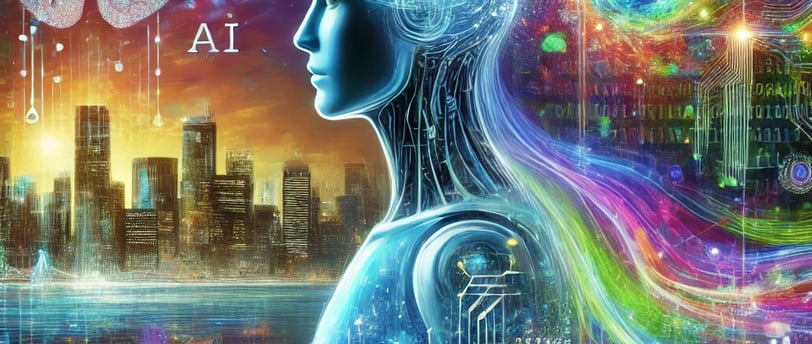History of AI: A brief introduction
The journey of artificial intelligence dates back to ancient times, with myths and stories about artificial beings endowed with intelligence or consciousness. However, the formal development of AI as a field of study began in the 20th century...
5/8/20242 min read


The journey of artificial intelligence dates back to ancient times, with myths and stories about artificial beings endowed with intelligence or consciousness. However, the formal development of AI as a field of study began in the 20th century.
Early Foundations
The concept of creating intelligent machines can be traced to the early 20th century with the development of algorithms and computational theories. In 1950, British mathematician and logician Alan Turing published a seminal paper titled "Computing Machinery and Intelligence," which proposed the famous Turing Test as a criterion for determining whether a machine can exhibit intelligent behavior indistinguishable from that of a human.
The Birth of AI
The term "artificial intelligence" was officially coined in 1956 during the Dartmouth Conference, organized by John McCarthy, Marvin Minsky, Nathaniel Rochester, and Claude Shannon. This event is considered the birth of AI as a field of research. The attendees believed that machines could be made to simulate any aspect of human intelligence, and this optimism fueled early AI research.
The Early Years: 1950s-1970s
The initial decades of AI research were marked by significant advancements in problem-solving and symbolic reasoning. Early AI programs, such as the Logic Theorist (1956) and the General Problem Solver (1957), demonstrated that machines could perform tasks requiring logical reasoning. However, progress was slow due to limited computational power and the complexity of programming human-like intelligence.
The AI Winters: 1970s-1980s
Despite early successes, the field of AI faced periods of reduced funding and interest, known as "AI winters," during the 1970s and 1980s. These downturns were due to unmet expectations and the inability of AI systems to handle real-world complexity. Researchers struggled with issues such as knowledge representation, reasoning under uncertainty, and natural language understanding.
Renewed Interest and Modern AI: 1990s-Present
The resurgence of AI began in the 1990s, driven by advances in computer hardware, machine learning algorithms, and the availability of large datasets. One of the most notable milestones was IBM's Deep Blue defeating world chess champion Garry Kasparov in 1997. This victory showcased the potential of AI in specific domains.
The 21st century has witnessed remarkable progress in AI, particularly with the advent of deep learning and neural networks. These techniques have enabled breakthroughs in image and speech recognition, natural language processing, and autonomous systems. AI applications are now pervasive, from virtual assistants like Siri and Alexa to self-driving cars and sophisticated medical diagnostic tools.
Conclusion
The history of artificial intelligence is a testament to human ingenuity and the relentless pursuit of creating machines that can augment and enhance human capabilities. While challenges remain, the future of AI holds immense promise, with the potential to revolutionize industries, solve complex global problems, and improve the quality of life for people worldwide. As AI continues to evolve, it is essential to address ethical considerations and ensure that its development benefits all of humanity.
